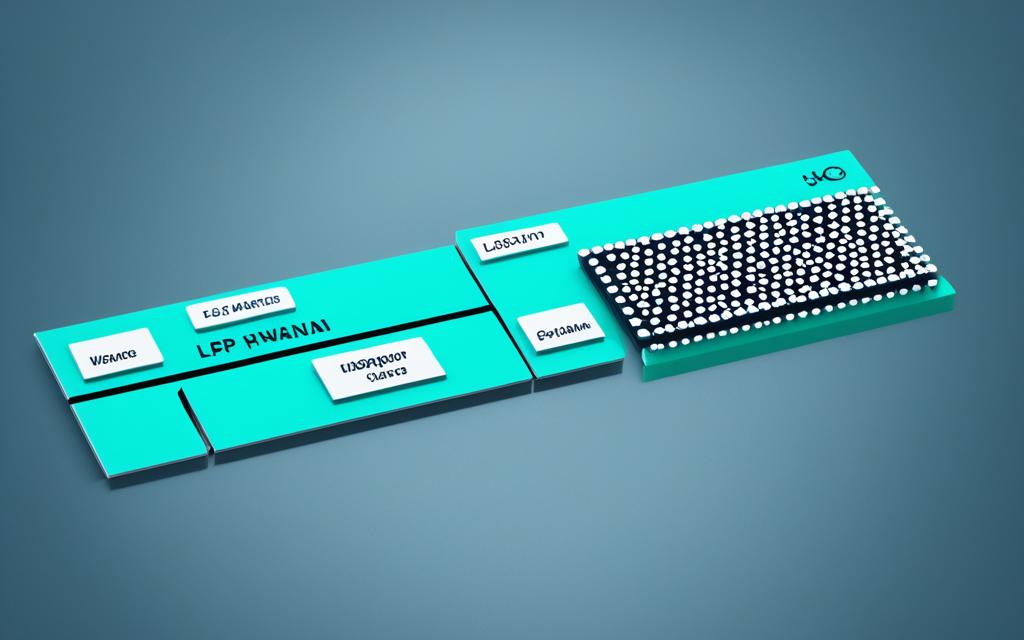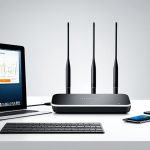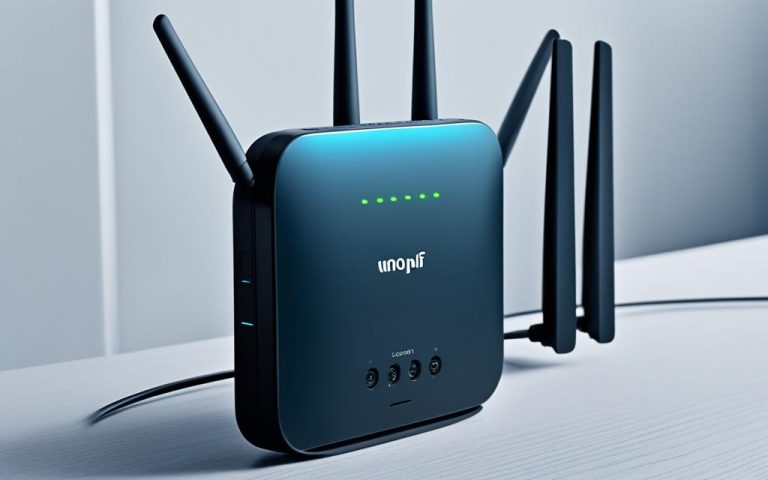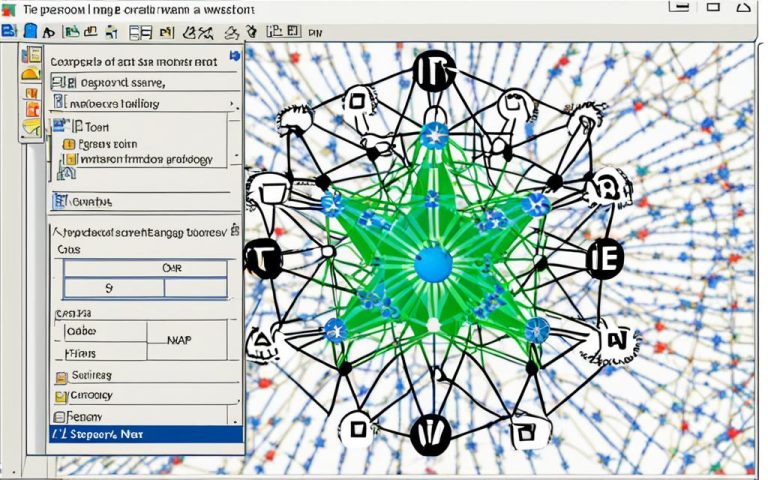LPWAN technologies have rapidly emerged as a key enabler in the Internet of Things (IoT) landscape, offering a range of benefits suitable for personal area network applications. LPWAN, or Low-Power Wide-Area Network, refers to a class of wireless communication standards and solutions designed specifically for IoT devices. These technologies provide long-range coverage, low transmission rates, and extended battery life, making them ideal for constrained environments and resource-constrained devices.
LPWAN technologies have characteristics that set them apart from other wireless communication options. They have device costs ranging from $3 to $7, packet sizes that can range from 10 to 1000 Bytes, and long battery life that can extend beyond 10 years. With support for 100K+ devices and coverage ranging from 2 km to 1000 km, LPWAN technologies are designed to meet the unique demands of IoT applications.
LPWAN technologies are contributing to the growth of IoT and Machine-to-Machine (M2M) applications in various industries. Their long-range connectivity, low power consumption, low deployment costs, reliability, and scalability make them suitable for a wide range of personal area network applications. These applications include environment monitoring, smart cities, agriculture, healthcare, industrial automation, asset tracking, logistics, and transportation, to name a few.
As LPWAN technologies continue to evolve, it becomes essential to understand the differences between various LPWAN protocols available in the market. Protocols like LoRa, Sigfox, NB-IoT, and LTE-M offer distinct features such as power consumption, coverage, data rate, security, cost, and Quality of Service (QoS). Choosing the right protocol depends on the specific requirements of the application and the desired tradeoffs between these features.
While LPWAN technologies bring immense opportunities, they also come with challenges that need to be addressed. Spectrum limitations, coexistence with other wireless technologies, mobility support, scalability, coverage, security, and application-specific requirements are some of the challenges that need to be overcome. However, overcoming these challenges will unlock the full potential of LPWAN in personal area network applications.
In summary, LPWAN technologies are revolutionizing personal area network applications by providing efficient and cost-effective solutions for IoT and M2M deployments. These technologies offer the necessary characteristics for a wide range of applications and have the potential to reshape various industries. Continued research and development in LPWAN will pave the way for future advancements and ensure the optimization of these technologies for personal area network applications.
LPWAN Characteristics and Applications
LPWAN technologies offer several key characteristics that make them highly suitable for a wide range of IoT applications. These characteristics include:
- Long-range connectivity: LPWAN enables devices to communicate over extensive distances, making it ideal for applications that require coverage over large areas.
- Low power consumption: LPWAN devices are designed to operate on minimal power, resulting in long-lasting battery life. This characteristic is particularly relevant for applications in remote areas or those with limited power supply.
- Low deployment and operational costs: LPWAN solutions offer cost-effective implementation and maintenance, making them accessible for a wide range of deployments.
- Reliability and robustness: LPWAN technologies are engineered to provide reliable and robust communication, ensuring that data transmission is stable and consistent.
- Scalability: LPWAN networks can support a large number of connected devices, which is crucial for IoT applications that require the simultaneous connectivity of numerous devices.
These LPWAN characteristics make it a versatile technology that can be applied to various IoT applications, including:
- Environment Monitoring
- Smart Cities
- Agriculture
- Healthcare
- Industrial Automation
- Asset Tracking
- Logistics and Transportation
The relevance of specific LPWAN characteristics varies depending on the application. For instance, coverage is often a high priority in most applications, while low power operation is significant for deployments in remote areas or those with limited power availability.
When designing and deploying LPWAN solutions, it is essential to consider the tradeoffs between different characteristics. Each application may require a specific balance of characteristics to achieve optimal performance and meet the unique requirements of the use case.
Comparison of LPWAN Technologies
When it comes to IoT deployments, there is a plethora of LPWAN technologies available, including LoRa, Sigfox, NB-IoT, LTE-M, and more. These protocols vary in terms of their power consumption, coverage, data rate, security, cost, and Quality of Service (QoS). Understanding the differences between these LPWAN protocols is crucial in selecting the most suitable one for your specific application scenario.
A comprehensive comparative analysis reveals that LPWAN protocols based on technologies like LoRa, Sigfox, NB-IoT, and LTE-M boast several features that make them particularly suitable for future industrial applications. These features include:
- Energy efficiency: LPWAN protocols with low power consumption are advantageous in maximizing the battery life of IoT devices, allowing for long-term operation without frequent battery replacements.
- Wide coverage: LPWAN technologies offering extensive coverage are ideal for applications that require connectivity across large areas, such as smart cities or agriculture. They ensure seamless data transmission even in remote or challenging terrains.
- Cost efficiency: LPWAN protocols that provide cost-effective solutions are advantageous for businesses aiming to deploy IoT applications on a larger scale. Lower costs contribute to higher ROI and facilitate widespread adoption.
However, it’s important to note that the choice of the most suitable LPWAN protocol ultimately depends on the specific application scenario and the desired tradeoffs between different features. For instance, if power efficiency is of utmost importance, while coverage can be compromised to some extent, selecting a protocol like NB-IoT might be more appropriate. On the other hand, if both wide coverage and cost efficiency are crucial, LoRa may be the preferred choice.
LPWAN Technologies Comparison Table
| LPWAN Protocol | Power Consumption | Coverage | Data Rate | Security | Cost | Quality of Service (QoS) |
|---|---|---|---|---|---|---|
| LoRa | Low | Long-range | Up to 5 Kbps | 128-bit encryption | Low | Best Effort |
| Sigfox | Ultra-low | Wide coverage | Up to 100 bps | 128-bit encryption | Low | Best Effort |
| NB-IoT | Low | Wide coverage | Up to 250 Kbps | 3GPP security standards | Medium | Guaranteed |
| LTE-M | Low | Wide coverage | Up to 1 Mbps | 3GPP security standards | Medium | Guaranteed |

Challenges and Opportunities of LPWAN
While LPWAN technologies bring forth immense possibilities, they also come with their fair share of challenges that need to be overcome. Some of these challenges include spectrum limitations, coexistence with other wireless technologies, mobility support, scalability, coverage, security, and application-specific requirements. These factors make the adoption of LPWAN challenging in certain contexts.
However, in the face of these challenges, there are also significant opportunities that LPWAN can offer. LPWAN technology provides long-range connectivity, low power consumption, low cost, reliability, and scalability. These opportunities make LPWAN a viable choice for a wide range of applications in various industries.
Looking ahead, future research and development in LPWAN need to focus on addressing the identified challenges while exploring new applications and use cases. Additionally, efforts should aim to enhance the performance and efficiency of existing LPWAN technologies. By addressing these areas, LPWAN can unlock its full potential, revolutionizing connectivity for personal devices and enabling a new era of data exchange.
Conclusion
LPWAN technologies offer efficient, long-range solutions for personal area network applications in the IoT and M2M domains. With their characteristics such as wide coverage, low power operation, cost-effectiveness, reliability, and scalability, LPWAN technologies are well-suited for a diverse range of applications.
Although there are challenges to overcome, the opportunities presented by LPWAN in terms of connectivity, power efficiency, and cost make it a promising choice for future industrial applications. By investing in further research and development, we can address these challenges and unlock the full potential of LPWAN technology.
LPWAN is revolutionizing connectivity for personal devices, enabling a new era of seamless connectivity and data exchange. As the IoT landscape continues to expand, LPWAN will play a crucial role in connecting millions of devices across various industries, driving innovation and creating new opportunities.
FAQ
What is LPWAN?
LPWAN stands for Low Power Wide Area Network. It is a class of wireless IoT communication standards and solutions that offer long-range coverage, low transmission rates, and long battery life.
What are the characteristics of LPWAN?
LPWAN characteristics include device costs in the – range, packet sizes from 10 to 1000 Bytes, battery life of 10+ years, support for 100K+ devices, and coverage from 2 km to 1000 km.
What are the applications of LPWAN?
LPWAN is suitable for a wide range of IoT applications, including environment monitoring, smart cities, agriculture, healthcare, industrial automation, asset tracking, logistics and transportation, and more.
Which LPWAN technologies are available today?
Some of the LPWAN technologies available today include LoRa, Sigfox, NB-IoT, LTE-M, and more. These protocols differ in terms of power consumption, coverage, data rate, security, cost, and Quality of Service (QoS).
What are the challenges of LPWAN?
Some challenges of LPWAN include spectrum limitations, coexistence with other wireless technologies, mobility support, scalability, coverage, security, and application-specific requirements.
What are the opportunities for LPWAN?
LPWAN offers opportunities in terms of long-range connectivity, low power consumption, low cost, reliability, and scalability.



















